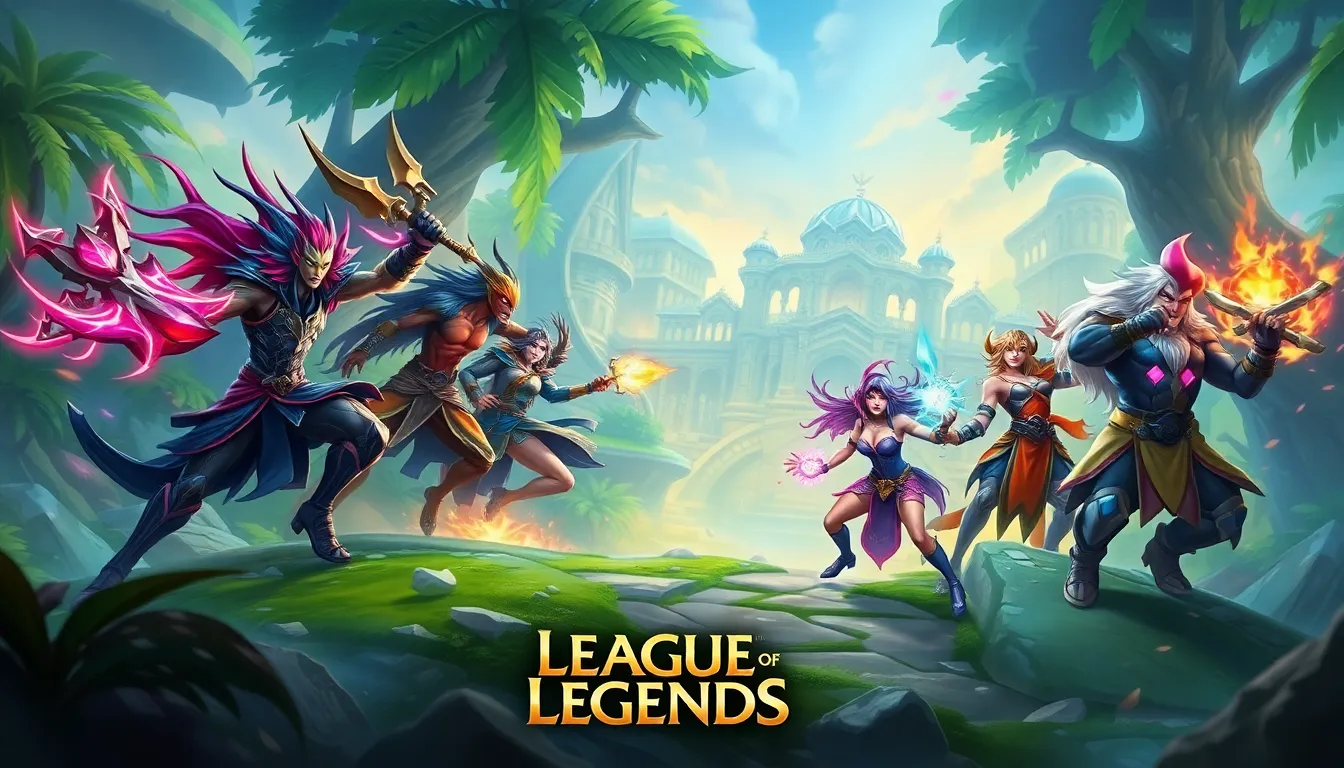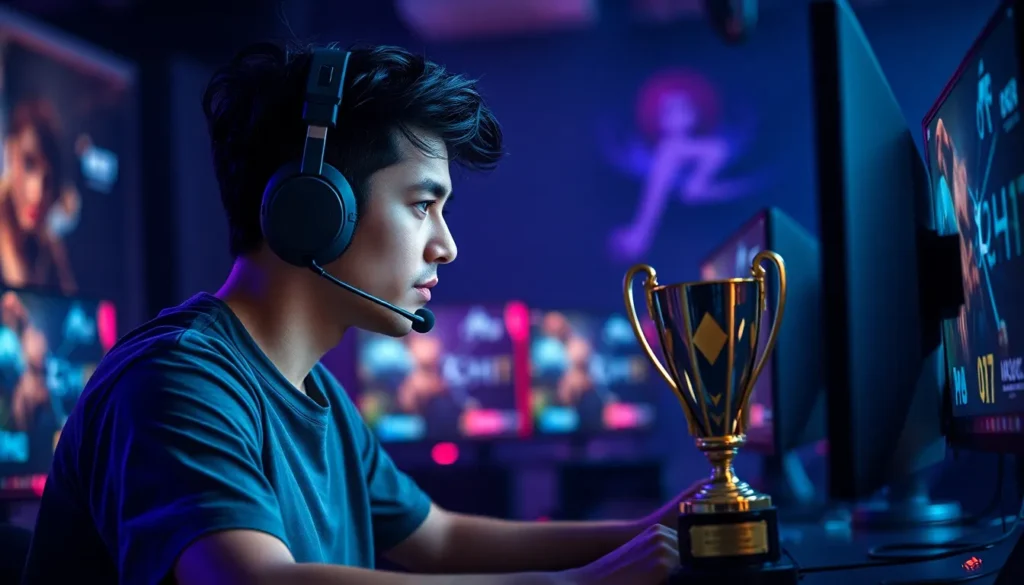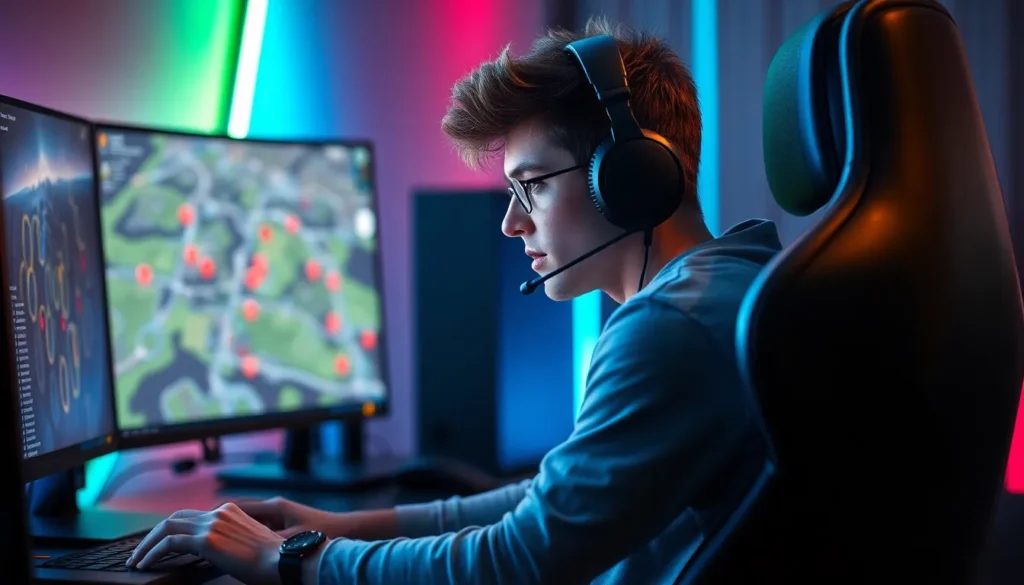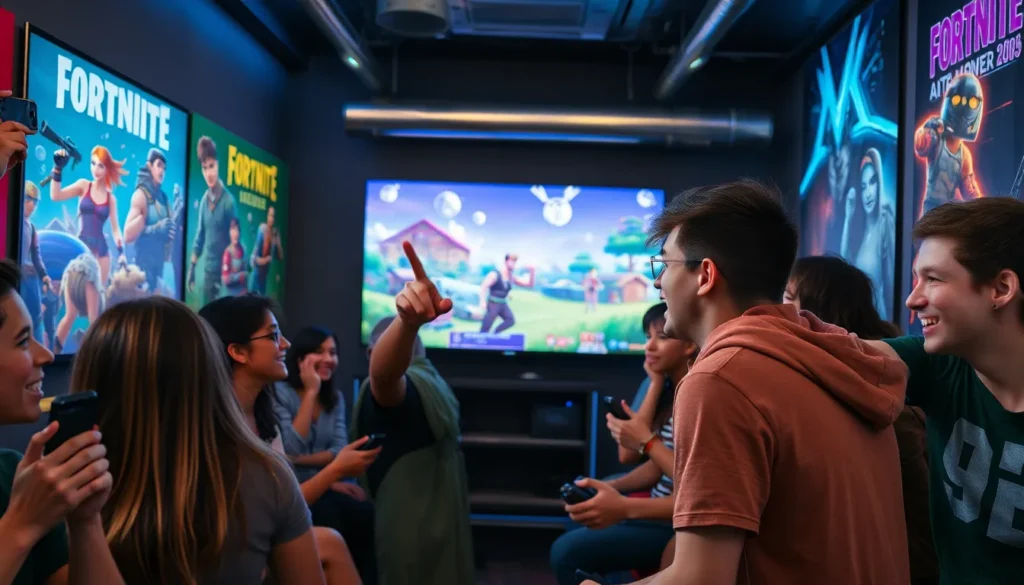In the chaotic world of League of Legends, the early game can feel like a high-stakes game of dodgeball—except everyone’s throwing fireballs and you’re just trying not to get hit. Mastering those first few minutes is crucial for setting the tone of the match. With the right early game tips, players can transform from a timid minion to a fearless champion, ready to dominate the Rift.
Understanding the Importance of Early Game
Early game sets the tone for the entire match in League of Legends. Players gain advantages that can influence later stages. Establishing lane dominance requires good positioning and effective trading. Objectives like Dragon and Rift Herald become easier to secure with an early lead. Securing vision control in crucial areas often prevents ambushes and allows for safe farming.
Strategies should focus on efficient gold and experience gain. Last hitting minions effectively builds resources crucial for buying items. Recognizing enemy movements and anticipating gank opportunities can create openings. Threatening enemies with pressure forces opponents to react defensively. Communicating effectively with teammates strengthens the team’s overall strategy and coordination.
Managing wave control is essential during the initial phase. Freezing a wave near the turret offers safety and sets up potential picks. Pushing the wave can deny the enemy experience and gold, maintaining an edge. Roaming to assist teammates fosters a collaborative environment and can secure kills.
Knowing champion matchups plays a significant role in early success. Familiarity with strengths and weaknesses allows for calculated aggression. Timing abilities to trade effectively secures early kills or forces summoner spells. Understanding the jungle’s rhythm also contributes to maintaining forward momentum.
Overall, mastering the early game can lead to a significant advantage. Players who adapt their strategies based on the early-game dynamics often find success. Therefore, prioritizing these tactics is essential for achieving victory in League of Legends matches.
Key Champions for Early Game Success

Choosing the right champions can impact early game success significantly. Certain champions excel at aggressive play, while others provide a more defensive advantage in lanes.
Aggressive Picks
Champions like Lucian, Draven, and Riven dominate early matchups through their high damage output. Lucian applies consistent pressure with strong trading potential and mobility. Draven capitalizes on catching axes to snowball quickly, often leading to early kills. Riven’s burst damage and mobility allow her to outmaneuver opponents effectively. Utilizing these champions can lead to lane dominance, making it easier to secure objectives. High-pressure gameplay reduces enemy options and opens opportunities for ganks from junglers.
Defensive Picks
Champions such as Leona, Alistar, and Teemo provide solid early-game defenses. Leona’s crowd control helps her protect allies and zone enemies effectively. Alistar can absorb damage while using his abilities to disrupt aggressive enemies, creating safe opportunities for teammates. Teemo’s shrooms deter enemy advances and grant vision in key areas. These champions focus on establishing safety in lanes, allowing for steady gold accumulation. Properly playing these champions leads to crucial survivability, enabling teams to respond to enemy threats confidently.
Farm Efficiently to Gain an Advantage
Farming correctly is vital for gaining an advantage in the early game of League of Legends. Efficient gold and experience gain can set the stage for dominance.
CS (Creep Score) Strategies
Prioritizing last hits on minions is essential for a high creep score. Players should focus on timing their attacks to secure each minion, maximizing gold income. Keeping track of minion health allows players to execute last hits consistently. Utilizing abilities to secure multiple minions simultaneously can yield increased gold. Additionally, maintaining awareness of enemy champions helps prevent interruptions and possible losses. Set realistic goals for your CS throughout the game, aiming for 70-80 by the 10-minute mark, which provides a solid foundation for future purchases.
Managing Minion Waves
Controlling minion waves provides a strategic edge. Freezing a wave near the tower makes it difficult for opponents to farm without risking ganks. Pushing waves can create opportunities to roam or contest objectives, like Dragon or Rift Herald. Players should time their pushes to deny enemy champions farm while keeping their own minions safe. Additionally, understanding when to reset waves based on enemy movements allows players to maintain pressure. Adjusting tactics based on wave positioning helps maintain an advantage throughout the early game.
Map Awareness and Vision Control
Map awareness and vision control play crucial roles in early game success in League of Legends. Players gain valuable advantages by maximizing their awareness and effectively controlling vision.
Warding Techniques
Establishing wards in strategic locations helps track enemy movements and secure objectives. Placing wards in the river and enemy jungle provides crucial information about potential ganks. Utilizing a control ward in key areas, like dragon or baron, denies vision to the enemy team. Rotating wards based on lane dynamics ensures consistent information flow throughout the game. Players should aim to replace old wards frequently, as expired wards don’t provide any valuable insights. Investing in vision not only protects players but also aids in setting up advantageous plays.
Keeping Track of Enemy Movements
Monitoring enemy movement creates opportunities for safe plays. Keeping an eye on the minimap alerts players to potential ganks and ambushes. Noticing when enemies are missing from lane encourages players to play more defensively or set up for strategic plays. Taking note of enemy recall timings can signal an opening to secure objectives or farm safely. Communicating enemy locations to teammates enhances overall map control and team coordination. Observing the jungle’s rhythm enhances a player’s ability to avoid danger and seize opportunities effectively.
Effective Communication with Teammates
Effective communication boosts coordination and strategy in League of Legends. Establishing clear dialogue among teammates leads to better decision-making and enhances gameplay.
Pinging and Callouts
Using pings effectively provides essential information to teammates. This includes alerting them to enemy positions and potential dangers. Players should utilize different ping types, such as danger and on-my-way pings, to convey urgency. Keeping messages concise helps teammates quickly understand the situation. For example, signaling when an enemy jungler is nearby encourages caution. Regular callouts build a collaborative environment, enabling players to respond to threats or opportunities more efficiently. Players benefit from timely information, resulting in safer plays and a stronger early game.
Setting Up Ganks
Coordinating ganks requires clear communication between the jungler and laners. Junglers should inform their teammates when they’re approaching for a gank. For laners, providing details about enemy positioning and health status enhances the chances of success. Timing ganks during moments of weaker enemy positioning can lead to early advantages. It’s essential to discuss whether to engage or retreat, helping to avoid unnecessary losses. Establishing mutual awareness of the enemy’s cooldowns further strengthens gank strategies. Synchronizing efforts ultimately ensures a higher likelihood of securing early kills and objectives.
Mastering the early game in League of Legends is crucial for setting the stage for success. By focusing on effective farming vision control and communication players can build a strong foundation that influences the entire match. Utilizing the right champions and strategies allows players to establish lane dominance and secure vital objectives.
With practice and awareness players can turn the early game into a powerful advantage. Embracing these tips will not only enhance individual performance but also contribute to overall team success. As players refine their skills in the early game they’ll find themselves better equipped to navigate the challenges that lie ahead.








